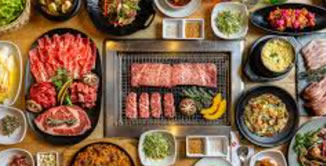

Traditional Korean Fermentation: Mastering Kimchi and Beyond
Korean cuisine is renowned for its unique fermentation techniques, which have been perfected over centuries. These methods not only enhance the flavors of dishes but also add significant health benefits through probiotics and enzymes. Mastering traditional Korean fermentation allows you to explore a vibrant world of flavors that extend far beyond the beloved kimchi. This guide introduces you to the art of Korean fermentation, offering detailed instructions to create staple recipes at home.
**Kimchi** is undoubtedly the crown jewel of Korean fermentation. To make it, start with one napa cabbage, cut into quarters and soaked in a saltwater brine for several hours. Combine crushed garlic, ginger, gochugaru (Korean red pepper powder), and fish sauce in a bowl, then toss with julienned radishes and green onions. After rinsing the cabbage, coat it with the spicy mixture, then pack it in an airtight container to ferment at room temperature for 2-3 days before storing in the fridge. Regularly taste your kimchi to track its development; you’ll know it’s ready when it achieves your desired level of tanginess and spice.
Beyond kimchi, **Doenjang** is another pillar of Korean fermentation, offering a rich umami flavor to soups and stews. This fermented soybean paste begins with soaked soybeans, which are boiled until soft and ground into a paste. Add salt and shape into blocks called meju. Allow the meju to dry naturally, then hang for months in a cool, airy place to ferment. Once ready, the meju is soaked in saltwater with a handful of charcoal and dried chilies, fermenting again through a winter to create the savory paste. Doenjang is perfect for adding depth to dishes like doenjang jjigae, a hearty stew renowned for its comforting flavor.
**Gochujang**, or fermented red chili paste, is essential in Korean kitchens for its sweet and spicy notes. Start by mixing sweet rice flour with water and sugar to form a smooth paste. Incorporate fermented soybean powder, gochugaru, and salt, creating a thick consistency. Spread the mixture in a shallow dish and allow it to ferment naturally under the sun for one to two months, stirring occasionally until it reaches a deep red color and full-bodied flavor. This versatile condiment enhances dishes like bibimbap and tteokbokki with its signature kick.
**Makgeolli** is a beloved Korean rice wine made through fermentation, offering a smooth, slightly sweet taste with a mild tang. To prepare makgeolli, wash and soak sweet rice, then steam until tender. Let it cool and mix with nuruk, a fermentation starter. Transfer to a sterilized container, cover, and ferment for about a week until it turns milky and aromatic. When ready, strain the liquid to enjoy a refreshing drink rich in natural flavors and probiotic benefits.
Experimenting with **Ganjang**, or traditional soy sauce, involves fermenting soybeans with wheat or barley. Begin with the same step as doenjang to create meju blocks. Soak meju in saltwater alongside dried kelp and allow it to ferment in large jars under the sun for several months. The result is a dark, salty liquid that can be strained and used as a versatile seasoning sauce. Its rich, umami intensity is perfect for marinating or adding depth to soups.
By mastering these traditional Korean fermentation techniques, you're not only preserving a culinary tradition but also creating flavorful, healthful ingredients that enhance your cooking repertoire. Each method and dish encapsulates the rich tapestry of flavors that define Korean cuisine, offering a transformative experience in taste and nutrition.
